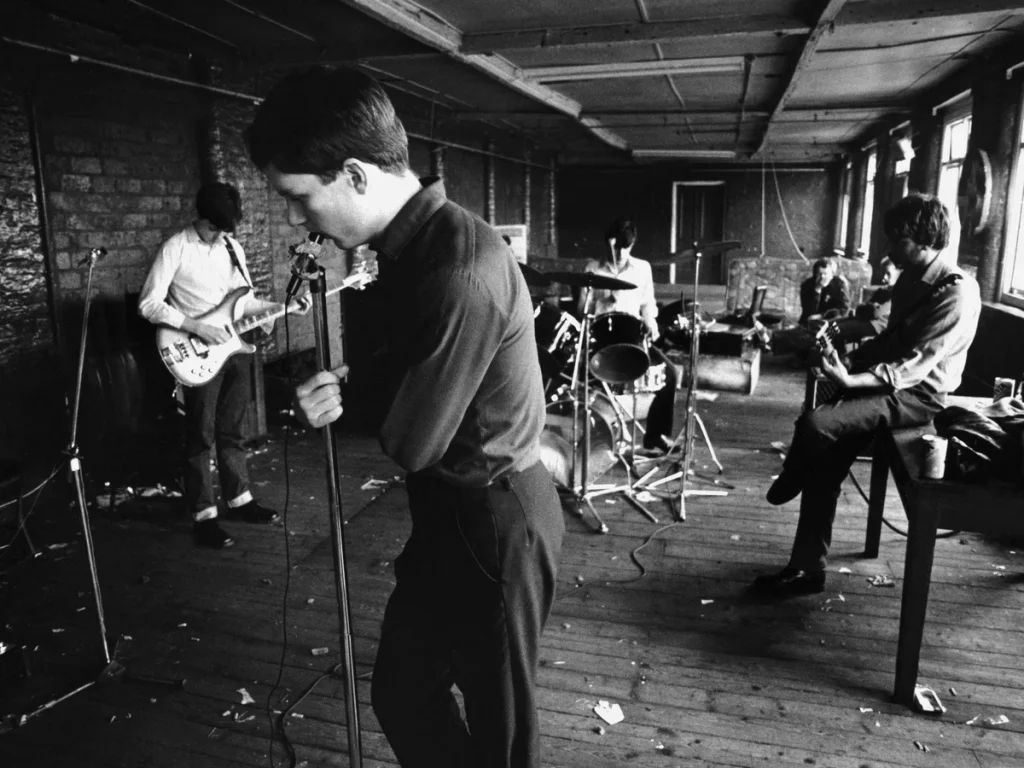
Scholars have long drawn connections between urban life and specific music genres, especially heavy metal. The British bands Black Sabbath and Joy Division serve as compelling case studies, exemplifying how their music emerged as a reflection of the bleak, industrial landscapes of 1960s and 1970s England. Despite belonging to different genres, both bands share a profound commonality: their sound was forged by—and evocative of—the desolation of these environments. This influence is particularly evident through key musical elements, including an unusually bass-heavy sonic palette, repetitive and continuous textures, austere arrangements, rigid song structures, and lyrical themes steeped in urban alienation.
Though separated by roughly a decade, Black Sabbath and Joy Division each aligned loosely with the dominant musical movements of their time. Black Sabbath emerged from the late 1960s blues rock scene, while Joy Division was a product of the post-punk wave of the late 1970s. Despite the differing genres, both bands distinguished themselves through striking originality and enduring influence. Their impact can be traced to two key sources: a strong sense of group synergy and their ability to channel shared urban-industrial experiences into music. In this sense, their music evokes a soundscape of similarly bleak and oppressive environments.

A defining similarity between Black Sabbath and Joy Division lies in the pervasive darkness and heaviness of both their sound and lyrical content. This shared aesthetic reflects a fascination with bleak and nihilistic themes–ranging from personal alienation and psychological turmoil to pressing social concerns such as war and drug addiction, particularly prominent in Black Sabbath’s music. This sonic and thematic weight can be traced directly to the oppressive industrial environments that shaped each band’s identity. Black Sabbath’s members, for instance, were raised in Aston, a war-scarred inner-city district of Birmingham marked by factories, soot-covered terrace houses, smoking chimneys, and remnants of World War II bomb sites. Such surroundings weren’t just the backdrop of their lives; they seeped into the music, transforming lived experience into powerful soundscapes of urban despair.

Joy Division’s origins closely mirrored those of Black Sabbath, shaped by similarly stark surroundings. Bassist Peter Hook and guitarist Bernard Sumner–the band’s central creative forces–grew up in Salford, a working class area near Manchester, during the 1960s and 1970s. Sumner vividly described his neighborhood as “a potted version of the entire, industrialized northwest,” listing iron works, copper works, cloth-finishing factories, paint and chemical plants, cotton mills, sawmills, and brass foundries—all within walking distance of his home. Despite a strong sense of community fostered by tightly packed terraced houses that fronted directly onto the street, the neighborhood was shadowed by frequent violence and a culture that emphasized emotional stoicism and cold, hardened masculinity.

The primal, bass-heavy, riff-driven sound of both Black Sabbath and Joy Division mirrors the industrial landscapes from which they emerged. Factories, conveyor belts, trains, and constant traffic created a dense low-frequency soundscape–a persistent rumble and thunder that saturated the environment. Although high-pitched noises occur in such settings, they are typically brief and peripheral, sharply contrasting with the ever-present bass tones. The absence of natural high-frequency sounds–such as birdsong or rustling leaves–further contributes to the sonic bleakness, depriving the environment of melodic brightness. This acoustic scarcity is echoed in the music: both bands emphasize low-end frequencies and a limited melodic range, effectively channeling the oppressive atmosphere of industrial life and amplifying the emotional starkness at the core of their sound.
This according to “Channelling the darkness: Group flow and environmental expression in the music of Black Sabbath and Joy Division” by Steve M. Taylor (Metal music studies 7/1[2021] 85–102; RILM Abstracts of Music Literature, 2021-4270).
Black Sabbath played their final concert last week on 5 July 2025 at Villa Park in Aston, Birmingham, England. They are widely considered the pioneers of contemporary heavy metal.
Below, Black Sabbath performs Electric funeral on their farewell tour. The next video features Joy Division performing Transmission in September 1979.
Related Bibliolore posts:
https://bibliolore.org/2018/04/16/black-sabbath-and-nietzsche/
https://bibliolore.org/2023/10/24/metal-blade-records-pioneering-la-heavy-music-label/








